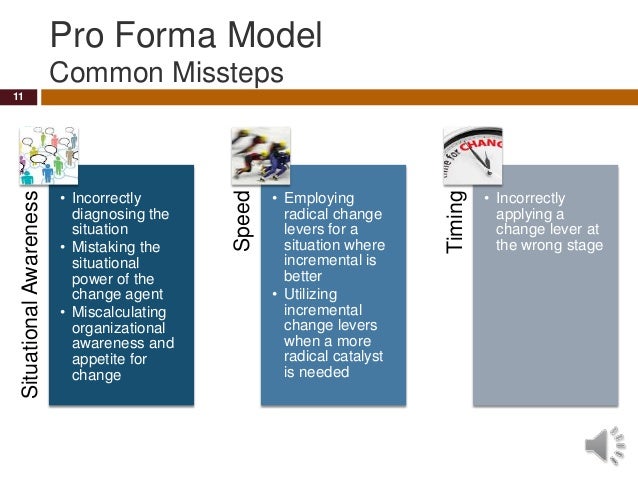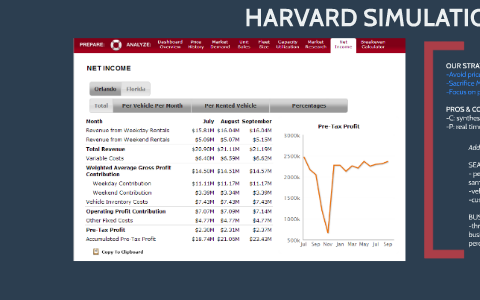This Data Analytics Simulation: Strategic Decision Making case study introduces the power of analytics in decision-making. As the brand manager for laundry detergent, one must implement decisions to boost brand performance through the application of sophisticated analytic techniques. This is geared to determining issues and strategies which could help a company in the long run.

Nexlearn is an experienced, award winning, e-learning innovator. Learn more about us at: http://www.nexlearn.com/. How to win Harvard simulation:Marketing Simulation: Managing Segments and Customers? Top Answer In single-player simulation, you can define and execute a business-to-business marketing strategy at a manufacturer for motors used in medical devices.
Thomas H. Davenport
Harvard Business School Publishing (7050-HTM-ENG)
Feb 24, 2016
Case questions answered:
- Illustrating that understanding some of the underlying factors and segments in data helps develop a coherent marketing approach over several years.
- Showing that analytics and decision-making are iterative processes and after each new decision there is typically new data to analyze and understand.
- Suggesting that successful financial performance is the result of several possible, and combinations, of factors-rarely, does a single variable explain an outcome.
- Communicating that all predictions and forecasts are based on probabilistic assumptions resulting in a range of possible results.
Not the questions you were looking for? Submit your questions & get answers.
Case answers for Data Analytics Simulation: Strategic Decision Making
Logic behind Strategies1
2019
Learning from mistakes with a previous simulation, Blue’s Brand Team is setting the production to 40M units, which is slightly larger than the forecasted demand of approximately 32M. We2 expect our investment in Digital Ads (35% of Total Media Budget) to help us reach out to more potential customers in our target market segment (individuals under 44 years old), which was selected based on the Primary Customer Segment3 for Pods4 (the top formulation on the Formulation Demand graph in all simulations). This segment was also essential to determine, for example, a higher investment on Convenience for trade channels, as they often look for the “most convenient,” “premium” options. Price remained at $7 per unit, based on the Price Point Demand graph from the previous simulation, which illustrated that at $5-7 per unit, demand for 2019 was 39,140,217 units. Convenience and Club were the trade channels with the highest rates, so the received a higher percentage of the category budget.
Result: Growth in Market Share to 14%, and significant growth in revenue (around 24%) in a year when the revenue of all Blue’s competitors declined.
2020
With 2019’s simulation, we learned that the demand for Blue’s Pods at a price range of $7-9 would be of more than 52M units. Given the forecasted demand for 2020 (an average of 48M), however, we decided that continuing with the price of $7 per unit and trying to reach out to a broader audience (as the demand for this price would be more than 98M units) would be unfeasible. The most coherent decision is to raise prices to $9 per unit, so we continue to approach the same audience while maximizing profits. Trade channel, media spend, formulation, product feature, and segmentation will remain the same, so the impact of the increase in prices can be analyzed with reduced noise from the variables.
Result: This was a bad year for Blue. Market share dropped to 8.5%, and revenue decreased significantly.
2021
The price will be reduced to $8 per unit given the decrease in sales last year. Based on the report for Consumed Media, we decided to redistribute the media spend percentages, increasing Print in 3% and decreasing TV in the same amount. Demand is forecasted to be approximately 28M units. We will produce 35M with the expectations that lower prices are correlated to a larger demand.
Result: Blue’s performance was mediocre. It was definitely better than last year’s, but market shares slightly improved – now at 9.5%, and revenue increased modestly.
2022
For the last year of simulations, we decided to keep the price at $8 per unit, and the production at 35M units, given that demand was similar to the previous year’s, and Blue does not intend to accumulate large amounts of inventory. We upgraded the percentage of digital ads to 40%, making it the leading media tool for engagement with customers.
Harvard Simulation Answers Crossword

Final Result: The simulation ends with blue conquering a 9.9% market share, which is almost ⅔ of the value the company reached in 2019, but it is important highlighting that it was an unusual year for the industry when all the competitors underperformed, and Blue’s price was still $7 per unit, probably offering a high cost-benefit relationship to consumers. Although Blue’s revenue was still the smallest in the industry after the simulation (Exhibit 1), the company had the second highest operating profitability (Exhibit 2). Also, for 3 out of the 4 simulation years, the majority of social media sentiment shared about the brand was positive, which means the image of the brand has significantly improved as a consequence of decisions like increasing digital ads spending. The final cumulative operating profit was $243.9M.
Exhibit 1. Revenue Graph from the Data Analysis Simulation for Blue Detergents
Exhibit 2. Operating Profit Graph from the Data Analysis Simulation for Blue Detergents
Business Concepts
Above the Revenue Line
For this exercise, I kept in mind that while we should focus on maximizing profitability and market share while reducing costs if possible as end goals, these could only be achieved through an effective marketing plan. Understanding the dynamics of the market, including the overall trends of the industry, and how the perception of the brand changes with social media engagement, for instance, was crucial to the establishment of a strategy that connected marketing needs to financial success.
In 2019, for example, following only the financial forecasts for demand would probably lead managers in reducing production. Blue was expected to sell around 32M units in that year. Understanding the needs and preferences of the customers, however, made a difference. With the choice of producing detergent pods, the formulation with biggest growth potential, increasing the digital ads’ budget and the investment in convenient trade channels, while keeping the initial price, allowed Blue to sell all produced units and be the most profitable company in the industry in a year all its competitors underperformed.
Marketing Viability
The application of this LO overlapped with the previous one’s multiple times during the simulation. While the goal was to maximize financial measures of good performance, I focused on interpreting multiple trends in order to better understand the market’s limitation and what the best strategy would be accordingly.
For 2021, for instance, the Price Point Demand graph informed me that at $8 a unit, the market had a need for Blue’s product corresponding to more than 52M units. Given that, however, sales did not meet the demand for the previous year, I analyzed more closely the forecasted demand of around 28M. Setting the production to 35M that year allowed Blue to be more realistic in regards to the market’s demand and accumulate less inventory.
Reference
Davenport, T. (2016). Data Analytics Simulation: Strategic Decision Making. Available on November 29, 2017, at https://cb.hbsp.harvard.edu/cbmp/product/7050-HTM-ENG
Harvard Simulation Answers Examples
Endnotes:
1 simulation: The simulation for Blue’s case is developed and interpreted according to a perspective that allowed the company to create a profitable strategy for growth.
2 I chose to write this part in the first person of the plural in order to convey the idea that these decisions were taken
by a brand team, by more than a single manager.
3 From Exhibit 1 on the case description.
4 audience: Understanding of the main audience whose needs this product would be sufficing was essential to making a decision that allowed the company to increase profitability and positive sentiment among consumers.
Did this solution help you?

(20 votes, average: 2.70 out of 5)
Blue detergent vishwas 151202032 • 1. DATA-DRIVEN MANAGEMENT OF BLUE DETERGENT A S I M U L A T I O N C A S E S T U D Y V I S H W A S K 1 5 1 2 0 2 0 3 2 • OVERVIEW OF THE CASE • BLUE – Key laundry detergent product for Kelsey-White. • K-W managers took decisions regarding manufacturing and marketing based on gut feeling or experience. • They did not have any support for the decisions taken.
• Hence a need was identified by the CEO to take data-driven decisions.
Oct 09, 2014 simulation for Delphi printers and peripherals Nick DeCola WIT CIS. Global Supply Chain Management Simulation www.enspire.com Page 3 of 9 3) How to Play The Global Supply Chain Management Simulation Introduction In this game, you are in charge of the product introduction of two models of mobile phones. You will manage the design, forecast the demand, and choose the.

The professor gave me Simulation in Harvard website, I did the run I got a good result. But he sent three questions I need help to answer it, and I will provide all the screenshot from the website. The simulation is Universal Rental Car V2 The questions below: 1.) How did you use available information to infer patterns in overall demand across the number?
Harvard Business Simulation Answers Blue Detergent
Of periods of the game? How did it impact inventory decisions/capacity utilization? Please use information from Price History and Unit sales screens (please provide graphical and “view data” Screenshots) to support your answers. 2.) How would you characterize the behavior of each type of customer’s (business/leisure) responses to changes in price over the year? Raspolozhenie ordenov medalej na paradnom kitele armii rf. How does this vary across the three cities? WhichCity was the most challenging to manage?
3.) What pricing strategy did you use as you played the game? How did it impact yourperformance? In selecting the objective of your pricing strategy, what were you trying tomaximize? (i.e., profit maximization, market share maximization, meet competition, status quo,etc.). Please use screenshots from your simulation to support your answers. In the attachment my strategy.
Here is the work. Please let me know in case of any review need be. Sorry for keeping long. 1.) How did you use available information to infer patterns in overall demand across the number? Of periods of the game? How did it impact inventory decisions/capacity utilization?
Harvard Project Management Simulation Answers
Please use information from Price History and Unit sales screens (please provide graphical and “view data” Screenshots) Forecast on market demand and available data helped me easily comprehend the patterns and price elasticity for the two market segments. Book of yeezus pdf download. The prices directly impacted the market size and share in the car rental market.
Harvard Everest Simulation Answers
I observed from the simulation that high prices have an impact on two as.
